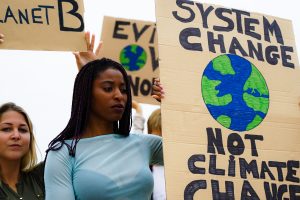ISSUE 48: Making ESG Impact Through Environmental Justice: 3 Approaches
Boards are being flooded with environmental, social and governance (ESG) impact noise, and are hard-pressed to identify concrete, material ESG issues that can be understood, managed, and tracked to control risk and preserve shareholder value. One aspect of ESG that is becoming more visible and could be better leveraged to produce tangible and meaningful ESG impact is environmental justice (EJ).
EJ has swiftly gained national prominence in the US under the Presidential EJ40 campaign, and it will be highlighted further in next month’s COP26 through one of the key elements of the Conference’s goal: Adaptation. Adaptation includes, “supporting communities who are most vulnerable to climate change.”[1] But this is easier said than done, and for these goals to be met “every company, every financial firm, every bank, insurer and investor will need to change.” So how can businesses change to address EJ? We offer 3 different approaches to tackling the issue:
1. Targeting Scope of Operations
Companies have the capabilities to target environmental justice issues within their scope of operations. As many organizations continue to develop carbon reduction strategies, they can take steps to better understand where their emissions are most impactful in the most vulnerable communities. This could mean building better infrastructure to support clean energy in areas that need it most or diverting waste away from overwhelmed areas. Bringing more sustainable solutions to the supply chain and the value chain can also be a mechanism for addressing EJ. For example, Starbucks implemented carbon footprint and water reduction strategies at farms where their coffee is sourced – reducing their own Scope 3 emissions and advancing the livelihoods of small farmers in over 30 countries.[2]
2. Community Building
 Building and uplifting the surrounding community where a company operates is a crucial component to ESG and can be viewed through the lens of EJ. For example, the local chapter of the NAACP worked with refiners in Port Arthur, TX to promote more jobs training and hiring of minorities that we disproportionately impacted by Hurricane Harvey. Developing educational programs for low-income communities about EJ and green technology can help promote the development of green jobs and just solutions to climate risk in host communities[3]. Companies can also elevate disadvantaged voices by being an active participant in industry groups – such as the Green Justice Coalition[4] – to promote real progress on EJ.
Building and uplifting the surrounding community where a company operates is a crucial component to ESG and can be viewed through the lens of EJ. For example, the local chapter of the NAACP worked with refiners in Port Arthur, TX to promote more jobs training and hiring of minorities that we disproportionately impacted by Hurricane Harvey. Developing educational programs for low-income communities about EJ and green technology can help promote the development of green jobs and just solutions to climate risk in host communities[3]. Companies can also elevate disadvantaged voices by being an active participant in industry groups – such as the Green Justice Coalition[4] – to promote real progress on EJ.
3. Funding and Policy Advocacy
Organizations can have a direct impact on the issues they care most about through funding programs and policy changes – and EJ is no different. By visibly advocating for policies that support environmental justice, companies can make their priorities clear and use their power for good. They can also go further by partnering with grassroots organizations who are working on issues related to climate and environmental justice, to not only elevate the issues but to collaborate and learn from people who know most about them. Directly funding research and development programs that are working to bring green technology to disadvantaged communities is also a great way to tackle EJ head on. Microsoft is making strides in this space through a project with the Black-owned solar energy development firm Volt Energy to advance the company’s use of renewable energy and funding the development of renewable energy sources in underserved communities across the US.[5]
Understanding and acting on opportunities to promote environmental justice in affected communities will be an increasingly impactful endeavor to demonstrate meaningful ESG progress, particularly as EJ initiatives play out in the wake of COP26. As companies sharpen and implement their climate action plans, net zero commitments and overall ESG programs, they can demonstrate tangible and local impact through climate justice by making adjustments within the scope of their operations, building the capacity of affected communities and leveraging financing to promote grass-roots initiatives.
Does your organization need assistance with ESG Strategy and charting a path in the “just transition”? Check out how we have helped other companies here and find out more at acornintllc.com.
[1] More information about COP26 Goals, including Adaptation, can be found on their site: https://ukcop26.org/cop26-goals/adaptation/
[2] Read more about Starbucks’ Coffee and Farmer Equity (C.A.F.E.) Practices here: https://stories.starbucks.com/press/2020/cafe-practices-starbucks-approach-to-ethically-sourcing-coffee/
[3] For example, the Children’s Environmental Literacy Foundation is promoting such programs in K12 institutions in New York and Texas. See https://celfeducation.org/
[4] This group collaborates with utilities to promote a program to encourage green energy solutions in disadvantaged communities by allowing a municipality or aggregator to use the combined creditworthiness of all its ratepayers to enter into long-term contracts for renewable energy with new project developers, – see https://greenjusticecoalition.org/.
[5] Microsoft draws a connection between the climate crisis and racial equity with new renewable energy partnership. https://www.cnbc.com/2021/08/11/new-microsoft-solar-project-shows-climate-racial-equity-are-connected.html
News & Notes

Acorn International
1702 Taylor St, Suite 200B
Houston, TX 77007, USA
1213 Purchase St
New Bedford, MA 02740, USA
